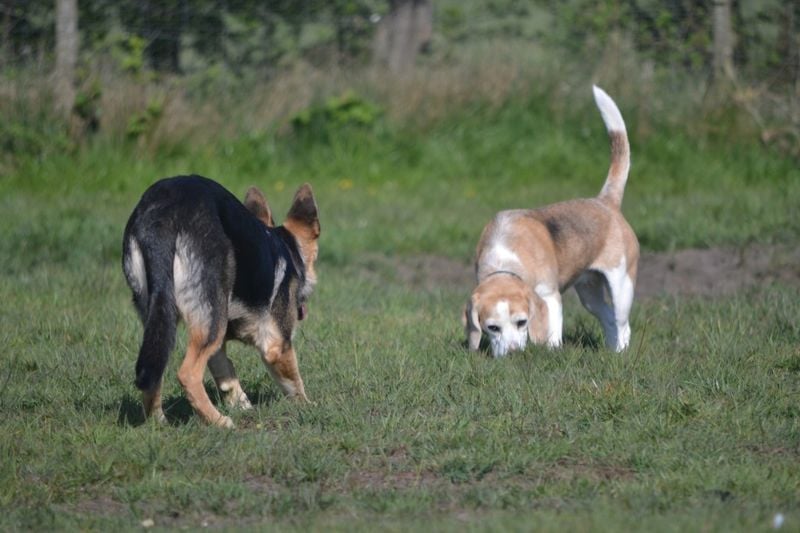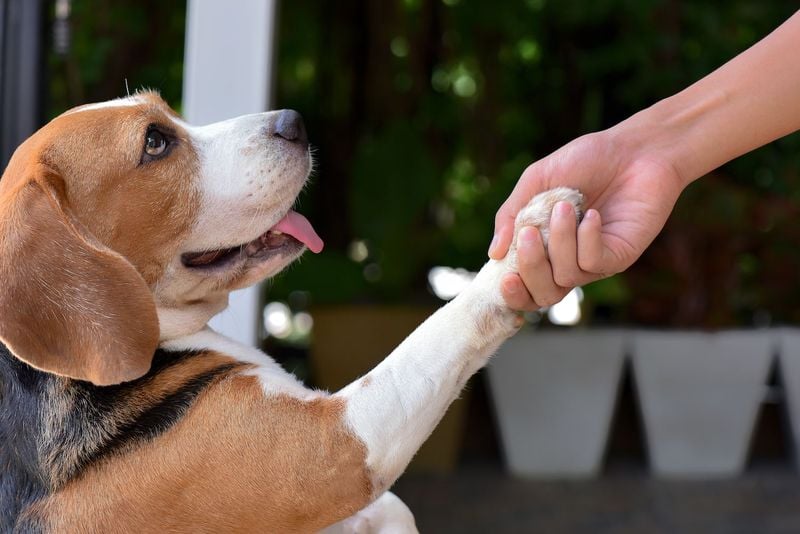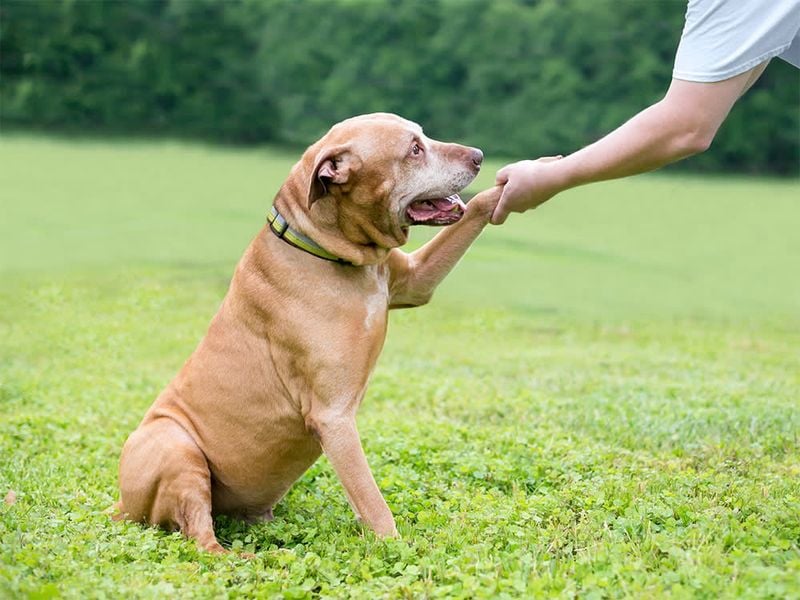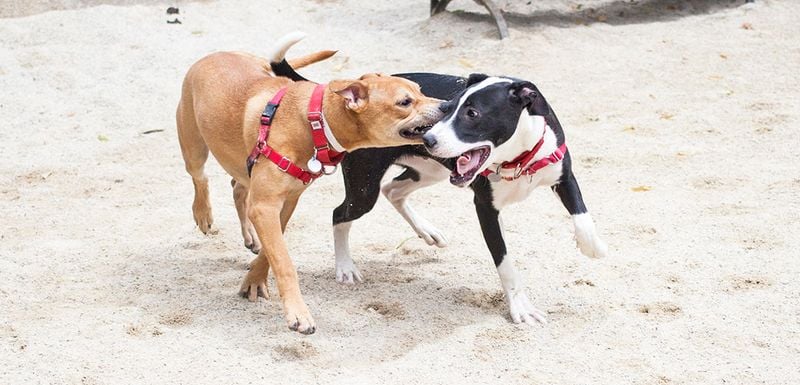10 Myths About Dog Behavior That Even Experienced Owners Believe
Even the most devoted dog owners get it wrong sometimes. You might think you understand your pup’s every wag, whine, or growl—but dogs don’t always speak in ways we expect.
Over time, certain myths about dog behavior have become so widespread, they’re often mistaken for fact. These misconceptions can affect how we train, respond to, and even bond with our dogs—sometimes causing more harm than good.
Whether it’s assuming guilt from a guilty face or believing your dog’s being “spiteful,” it’s easy to fall for these misleading ideas. And the worst part? Many of them sound totally reasonable.
This article uncovers 10 common dog behavior myths that even seasoned owners believe.
By letting go of these misunderstandings, you can become a more responsive, compassionate, and confident companion to your four-legged best friend.
1. A Wagging Tail Always Means a Happy Dog
Many owners assume tail-wagging equals joy. However, a wagging tail could also signify anxiety or alertness. The key is to observe the context and the dog’s overall body language.
For instance, a tail wag combined with tense body posture often indicates the dog is not entirely comfortable.
In contrast, a loose body with a gentle tail wag usually points towards happiness. It’s essential for pet owners to recognize these subtle cues to understand their furry friends better.
Observing how dogs interact with each other can also provide insights. Dogs use their tails to communicate complex emotions, not just joy.
2. Guilty Looks Mean the Dog Knows They Did Something Wrong
It’s a scene familiar to many dog owners: a chewed-up shoe and a dog with an expression that screams guilt. However, what we interpret as guilt is actually a submissive response.
Dogs read your tone and body language, and their ‘guilty’ look is a reaction to your perceived displeasure.
When scolded, they might cower or avoid eye contact, not because they understand the wrong, but to appease you. This behavior has roots in their pack mentality.
Unlike humans, dogs don’t have a moral compass. They learn from associations, not remorse. Understanding this can change how you approach training and discipline.
3. You Should Always Be the ‘Alpha’
The ‘alpha’ concept has long been associated with dog training, but it’s a misleading notion.
Dogs thrive on trust and consistency rather than dominance and fear. Recent studies have debunked the dominance theory, showing that cooperative training methods yield better results.
It’s about communication and building a bond. Positive reinforcement can be more effective than asserting dominance.
By focusing on understanding and responding to your dog’s needs, you create a harmonious relationship. This approach fosters a more balanced environment where both dog and owner feel respected and understood.
4. Dogs Know Right from Wrong Like Humans Do
Do dogs have a moral compass like humans? The answer is no. Dogs learn through associations and consequences, not ethical reasoning.
For example, a dog may associate the sound of a leash with a walk, not because they understand the concept of exercise, but from repeated experiences.
Training plays a vital role in shaping a dog’s behavior. Reward and consequence guide their actions more than any sense of right or wrong.
By understanding this learning process, owners can better tailor their training methods. Recognizing a dog’s perspective helps in fostering a nurturing environment.
5. Dogs Misbehave to Spite You
Ever come home to a torn pillow and thought your dog was being spiteful? In reality, misbehavior often stems from unmet needs like boredom or anxiety. Dogs don’t act out of revenge. Instead, they’re trying to communicate something.
Activity and mental stimulation are critical. A bored dog may resort to shredding items not as an act of spite, but as an outlet.
Regular exercise, toys, and interaction can mitigate these behaviors. By addressing the root causes, you can reduce unwanted actions and improve your pet’s well-being.
6. Puppies Will Grow Out of Bad Habits Naturally
The belief that puppies naturally outgrow bad habits is a common misconception. Without proper training, those cute but naughty antics can evolve into serious issues. Puppies require guidance to understand acceptable behavior.
Early training shapes a puppy’s development. Teaching basic commands and socializing them with other dogs and environments is crucial.
Consistent reinforcement helps transform those habits positively. Investing time in training pays dividends as your puppy grows into a well-behaved adult dog.
7. Breed Determines Behavior Completely
While genetics influence traits, a dog’s environment and training play a more significant role in shaping behavior. Stereotyping breeds can limit a dog’s potential. For instance, assuming all Labradors are gentle ignores individual personalities.
Socialization and exposure to various situations contribute to a dog’s temperament. Owners who engage positively with their dogs often see more adaptable behavior.
Understanding your dog’s unique needs beyond breed expectations creates a fulfilling relationship. Encouraging diverse experiences enriches a dog’s life, demonstrating the importance of nurture over nature.
8. My Dog Is Too Old to Learn New Tricks
The saying “you can’t teach an old dog new tricks” is far from true. Senior dogs are more than capable of learning.
In fact, their maturity can sometimes make them more receptive to training. With patience and the right motivation, older dogs can acquire new skills.
Training sessions should be adjusted to accommodate any physical limitations. Short, engaging activities keep them interested and stimulated.
Learning new tricks can enhance a senior dog’s quality of life, providing mental enrichment and strengthening their bond with their human companions.
9. Growling Should Always Be Corrected
Growling is often misunderstood as disobedience, but it’s a critical communication tool for dogs. Suppressing growling can lead to unanticipated aggression. It serves as a warning signal that a dog is uncomfortable or needs space.
Owners should learn to interpret the context of growling. Addressing the root cause, whether it’s fear or discomfort, can prevent escalation.
Recognizing growling as communication rather than misbehavior encourages safer interactions. By respecting this form of expression, we can better support our pets’ emotional well-being.
10. If a Dog Is Friendly with People, It’s Friendly with Other Dogs
A dog’s sociability with humans doesn’t always translate to fellow canines. Some dogs may adore human interaction but feel uneasy around other dogs due to past experiences or lack of socialization.
Understanding a dog’s history can explain these nuances. Gradual introductions in controlled settings can help improve canine interactions.
Fostering positive experiences with other dogs ensures a well-rounded social life. Recognizing individual preferences and respecting boundaries leads to happier and more confident pets.















